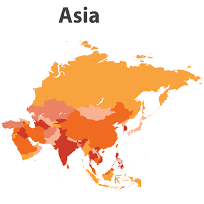DS Smith (LON:SMDS) has announced its 2019/20 half year results.
Highlights
· Record Group profitability and return on sales despite economic headwinds
o Market share gains driven by multinational FMCG and e-commerce customers
o Customers increasingly valuing our sustainable packaging solutions, reflected in good pricing and return on sales up 110 basis points
· Europe – good organic profit growth
· Europac – excellent progress and strong initial contribution
o Packaging turnaround to profitability
o €70m synergy programme fully on track
· Good US domestic performance offset by impact of export paper pricing
o Indiana greenfield box plant now operational
§ Transforms US capability and customer offering
§ Consistent with strategy to reduce US long paper exposure
· Strong cashflow and balance sheet
o Plastics disposal (net proceeds c. £400m) expected to complete around the calendar year end
o Strong liquidity profile: €600m, seven year bond raised at 0.875%
· Future growth prospects continue to benefit from the increased customer focus on sustainability (including plastic replacement) and e-commerce
Progress against medium-term targets
| Medium term targets Continuing operations(9) | Delivery in H1 2019/20(8) |
| Organic volume growth(2) ≥GDP(3)+1% (2.6%) | 0.7% |
| Return on sales(4) 10% – 12% | 11.0% |
| ROACE(5) 12% – 15% | 11.8% |
| Net debt / EBITDA(6) ≤2.0x | 2.3x |
| Cash conversion(7) ≥100% | 103% |
Notes to the financial tables
The Group uses certain key non-GAAP measures in order to provide an additional view of the Group’s overall performance and position, eliminating significant items that may impact understanding of the key trends and position. These measures are used internally to evaluate business performance, as a key constituent of the Group’s planning process, as well as comprising targets against which compensation is determined. Reporting of non-GAAP measures alongside reported measures is considered useful to enable investors to understand how management evaluates performance and value creation internally, enabling them to track the Group’s adjusted performance and the key business drivers which underpin it over time. Note 16 to the financial statements explains the use of non-GAAP performance measures and reconciles them to the closest IFRS measure.
The Group has adopted IFRS 16 Leases from 1 May 2019 and, as required by the modified retrospective approach, has not restated comparatives (see note 13 to the financial statements).
(1) Before adjusting items (see note 3 to the financial statements) and amortisation of intangible assets
(2) Corrugated box volumes (based on area (m2) of corrugated box sold), adjusted for working days, on an organic basis
(3) GDP growth (year-on-year) for the countries in which DS Smith operates, weighted by our sales by country = 1.6%. Source: Eurostat (14 Nov 2019)
(4) Operating profit before adjusting items and amortisation of intangible assets as a percentage of revenue
(5) Operating profit for the prior 12 month period before adjusting items and amortisation of intangible assets as a percentage of the average monthly capital employed over the previous 12 month period. Average capital employed includes property, plant and equipment, intangible assets (including goodwill), working capital, provisions, capital debtors/creditors and assets/liabilities held for sale. The impact of IFRS 16 Leases has been to decrease ROACE by approximately 20 basis points against the prior period
(6) Net debt at average exchange rates over Group operating profit before depreciation, adjusting items and amortisation of intangible assets for the previous 12 month period, calculated in accordance with banking covenants. The Group’s banking covenant requirements currently exclude IFRS 16 lease liabilities from the definition of net debt as well as requiring that EBITDA is calculated under the previous IAS 17 basis
(7) Free cash flow before tax, net interest, growth capital expenditure and pension payments as a percentage of operating profit before adjusting items and amortisation of intangible assets
(8) Organic corrugated box volume growth, cash conversion and return on sales given for the 6 months to 31 October 2019; ROACE and net debt / EBITDA given for the 12 months to 31 October 2019
(9) References to continuing operations excludes the Plastics division, which is now presented as a discontinued operation
“Our leadership in e-commerce and sustainable packaging solutions has enabled us to perform well despite a difficult macro environment and volatility in paper pricing. The continued growth in margin and strong pricing discipline has been particularly pleasing as we deepen our relationships with FMCG customers and grow market share.
We continue to capitalise on the strong long-term growth drivers of fibre-based packaging, with our industry-leading innovation driving differentiation in the market. Assuming current macro-economic conditions prevail, we anticipate an acceleration of volume growth in the second half of the year which, together with the resilience of our business model, supports our expectation of further growth in the year.”
Miles Roberts, DS Smith Group Chief Executive








































